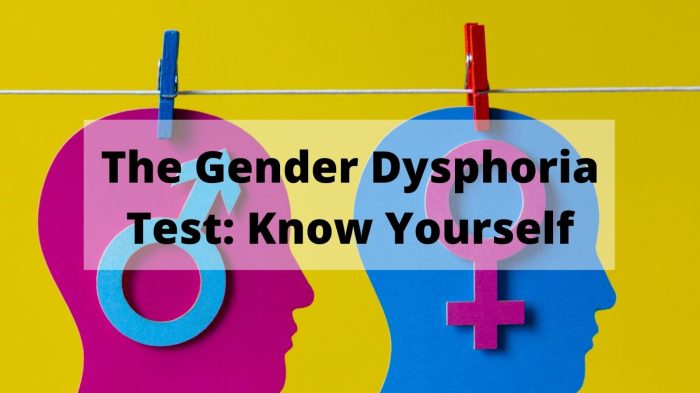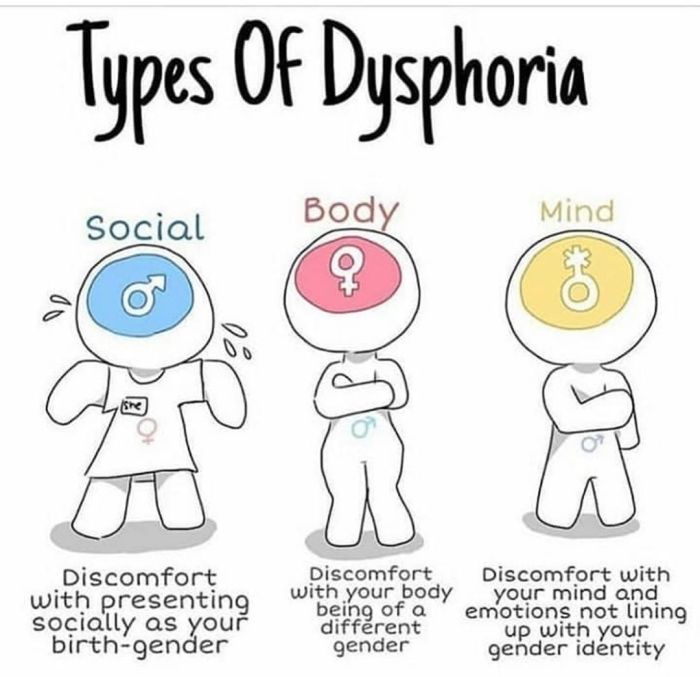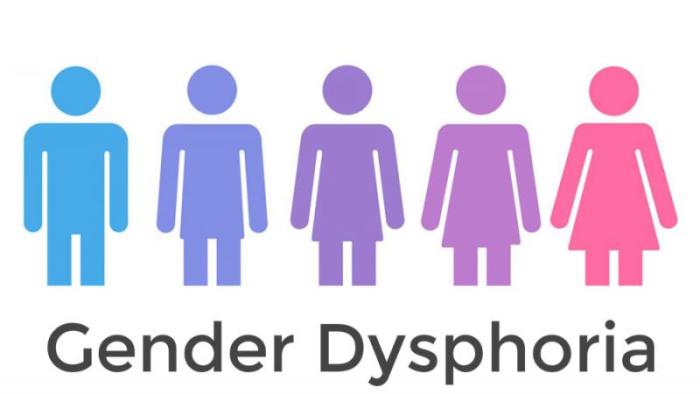Therapists who work with people with gender dysphoria typically: – Therapists who work with people with gender dysphoria typically possess specialized training and experience to provide comprehensive and compassionate care. Their expertise encompasses various therapeutic approaches, assessment techniques, and ethical considerations, enabling them to effectively support individuals navigating the challenges of gender identity and expression.
This article delves into the qualifications, therapeutic approaches, and ethical considerations involved in working with individuals with gender dysphoria. It highlights the importance of collaboration, evidence-based practices, and ongoing research to ensure optimal outcomes for clients.
Therapists’ Qualifications and Experience
Therapists who work with individuals with gender dysphoria typically hold a master’s or doctoral degree in a mental health field, such as psychology, social work, or counseling. They may also have additional training in gender-affirming care, which can be obtained through workshops, conferences, or specialized certification programs.
Some therapists may also be members of professional organizations, such as the World Professional Association for Transgender Health (WPATH), which provides guidelines and standards of care for transgender and gender-diverse individuals.
Experience in working with individuals with gender dysphoria is essential, as it allows therapists to develop a deep understanding of the unique challenges and experiences faced by this population. Experienced therapists are better equipped to provide informed and compassionate care, and they can draw upon their knowledge and skills to help clients navigate the complexities of gender identity and transition.
Therapeutic Approaches and Techniques: Therapists Who Work With People With Gender Dysphoria Typically:
Therapists employ a variety of therapeutic approaches and techniques when working with individuals with gender dysphoria. These approaches may include:
- Cognitive-behavioral therapy (CBT): CBT focuses on identifying and changing negative thought patterns and behaviors that contribute to gender dysphoria. Therapists may use CBT to help clients challenge their negative beliefs about themselves and their gender identity, and to develop more positive coping mechanisms.
- Psychodynamic therapy: Psychodynamic therapy explores the unconscious mind and its influence on gender identity. Therapists may use this approach to help clients understand the origins of their gender dysphoria and to develop a more integrated sense of self.
- Humanistic therapy: Humanistic therapy focuses on the individual’s potential for growth and self-actualization. Therapists may use this approach to help clients develop a positive self-image and to embrace their authentic gender identity.
- Supportive therapy: Supportive therapy provides a safe and supportive environment for clients to explore their gender identity and to develop coping mechanisms for dealing with gender dysphoria. Therapists may use this approach to help clients build self-esteem and to connect with others who share similar experiences.
Assessment and Diagnosis

The assessment process for gender dysphoria typically involves a comprehensive evaluation of the individual’s experiences and symptoms. Therapists may use a variety of assessment tools, such as interviews, questionnaires, and psychological tests, to gather information about the individual’s gender identity, gender dysphoria, and overall mental health.
The criteria for diagnosing gender dysphoria may vary depending on the specific diagnostic framework employed. However, the Diagnostic and Statistical Manual of Mental Disorders (DSM-5) defines gender dysphoria as a clinically significant distress or impairment in functioning associated with a marked incongruence between one’s experienced or expressed gender and one’s sex assigned at birth.
Treatment Planning and Goals
The treatment plan for gender dysphoria is developed collaboratively between the therapist and the individual. The goals of treatment may vary depending on the individual’s needs and preferences, but may include:
- Reducing gender dysphoria and improving overall mental health
- Supporting the individual’s exploration of their gender identity
- Providing information and resources about gender transition options
- Advocating for the individual’s rights and access to necessary care
Support and Advocacy

Therapists play a vital role in providing support and advocacy for individuals with gender dysphoria. They can create a safe and supportive environment for their clients, and they can help clients to develop coping mechanisms for dealing with discrimination and prejudice.
Therapists can also advocate for their clients’ rights and access to necessary care, such as hormone therapy and gender-affirming surgery.
Collaboration with Other Professionals
Therapists often collaborate with other professionals in providing comprehensive care for individuals with gender dysphoria. This may include medical professionals, such as endocrinologists and surgeons, as well as social workers and other mental health professionals. Interdisciplinary collaboration can help to ensure that the individual’s needs are met and that they receive the best possible care.
Ethical Considerations

Therapists must be aware of the ethical considerations when working with individuals with gender dysphoria. These considerations include:
- Informed consent: Therapists must obtain informed consent from their clients before providing any treatment. This means that the client must be fully informed about the risks and benefits of treatment, and they must be able to make a decision about whether or not to proceed with treatment.
- Confidentiality: Therapists must maintain the confidentiality of their clients’ information. This means that they cannot share any information about their clients with anyone else without their consent.
- Respecting the client’s autonomy: Therapists must respect the client’s autonomy and right to make decisions about their own life. This means that therapists cannot pressure clients to make any particular decision about their gender identity or transition.
Research and Evidence-Based Practice
Therapists should stay up-to-date on the latest research on the effectiveness of different therapeutic approaches for gender dysphoria. This will help them to provide the best possible care for their clients. Research has shown that a variety of therapeutic approaches can be effective for gender dysphoria, including CBT, psychodynamic therapy, and supportive therapy.
Therapists should also incorporate evidence-based practices into their work. This means using treatments that have been shown to be effective in research studies. Evidence-based practices can help to improve the outcomes for clients and to ensure that they are receiving the best possible care.
FAQ Insights
What are the qualifications for therapists working with gender dysphoria?
Therapists typically require a graduate degree in psychology, social work, or a related field, along with specialized training in gender dysphoria and LGBTQ+ issues.
What therapeutic approaches are commonly used for gender dysphoria?
Cognitive-behavioral therapy, psychodynamic therapy, and acceptance and commitment therapy are among the therapeutic approaches employed to address the psychological and emotional aspects of gender dysphoria.
How do therapists assess and diagnose gender dysphoria?
Assessment typically involves a comprehensive interview, psychological testing, and a review of the individual’s history and experiences to determine if they meet the diagnostic criteria for gender dysphoria.
What are the ethical considerations for therapists working with gender dysphoria?
Therapists must prioritize informed consent, confidentiality, and respect for the client’s autonomy. They should also be aware of their own biases and limitations and seek supervision or consultation when necessary.